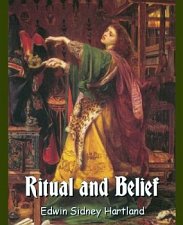
Archive file# i020100a
donated by Simon Miles
William Blake (English, 1757-1827)
The Ghost of a Flea 1819 c.
William Blake drew a series of "visionary heads" in his latter years, of spiritual visitors which he alone could see. One of them is a drawing of a reptilian almost exactly like the ones in The Biggest Secret. I think the picture is called the The Head of the Ghost of a Flea
Simon

This sketch formed part of the preliminary work to one of Blakes most famous paintings, of the same name.
This is one of the most unusual of the "visionary heads", the others, as with "Canute", often representing historical personages.

William Blake (English, 1757-1827)
The Ghost of a Flea 1819 c.
According to Blake, "all fleas were inhabited by the souls of such men as were by nature bloodthirsty to excess." Between the legs of this bloodthirsty ghost, look for the tiny corpse of a flea.
 Blake, William
(Soho, London, 28 Nov 1757; † London, 12 Aug 1827). English printmaker, painter and poet. His reputation as a visual artist increased during the 20th century to the extent that his art is as well known as his poetry. Yet in his own mind Blake never completely separated the two, and his most original work is to be found in hand-printed books of prophecy, which developed a personal mythology of limitless intellectual ambition. In these books, text and design are completely integrated in what he called ‘illuminated’ printing. He also made many pen and watercolour drawings, prints in various media and a small number of tempera paintings, but even in these his broader aims were primarily theological and philosophical: he saw the arts in all their forms as offering insights into the metaphysical world and therefore potentially redemptive of a humanity he believed to have fallen into materialism and doubt.
Blake, William
(Soho, London, 28 Nov 1757; † London, 12 Aug 1827). English printmaker, painter and poet. His reputation as a visual artist increased during the 20th century to the extent that his art is as well known as his poetry. Yet in his own mind Blake never completely separated the two, and his most original work is to be found in hand-printed books of prophecy, which developed a personal mythology of limitless intellectual ambition. In these books, text and design are completely integrated in what he called ‘illuminated’ printing. He also made many pen and watercolour drawings, prints in various media and a small number of tempera paintings, but even in these his broader aims were primarily theological and philosophical: he saw the arts in all their forms as offering insights into the metaphysical world and therefore potentially redemptive of a humanity he believed to have fallen into materialism and doubt.

William Blake Drawing




Search this Reptilian Agenda Website
It is presented here 'as is' for your benefit and research. Material for these pages are sent from around the world.
Please direct all correspondence to
TGS HiddenMysteries, c/o TGS Services,
22241 Pinedale Lane, Frankston, Texas, 75763
All Content © HiddenMysteries - TGS (1998-2005)
HiddenMysteries.com Internet Store ~ HiddenMysteries Information Central
Texas National Press ~ TGS Publishers Dealers Site
All Rights Reserved
Please send bug reports to info@hiddenmysteries.org
FAIR USE NOTICE. This site may at times contain copyrighted material the use of which has not always been specifically authorized by the copyright owner. We are making such material available in our efforts to advance understanding of environmental, political, human rights, economic, democracy, scientific, and social justice issues, etc.. We believe this constitutes a 'fair use' of any such copyrighted material as provided for in section 107 of the US Copyright Law. If you wish to use copyrighted material from this site for purposes of your own that go beyond 'fair use', you must obtain permission from the copyright owner.
In accordance with Title 17 U.S.C. Section 107, the material on this site is distributed without profit to those who have expressed a prior interest in receiving the included information for research and educational purposes. For more information go to: http://www.law.cornell.edu/uscode/17/107.shtml
United States Code: Title 17, Section 107 http://www4.law.cornell.edu/uscode/unframed/17/107.shtml
Notwithstanding the provisions of sections 106 and 106A, the fair use of a copyrighted work, including such use by reproduction in copies or phonorecords or by any other means specified by that section, for purposes such as criticism, comment, news reporting, teaching (including multiple copies for classroom use), scholarship, or research, is not an infringement of copyright. In determining whether the use made of a work in any particular case is a fair use the factors to be considered shall include - (1) the purpose and character of the use, including whether such use is of a commercial nature or is for nonprofit educational purposes; (2) the nature of the copyrighted work; (3) the amount and substantiality of the portion used in relation to the copyrighted work as a whole; and (4) the effect of the use upon the potential market for or value of the copyrighted work. The fact that a work is unpublished shall not itself bar a finding of fair use if such finding is made upon consideration of all the above factors.